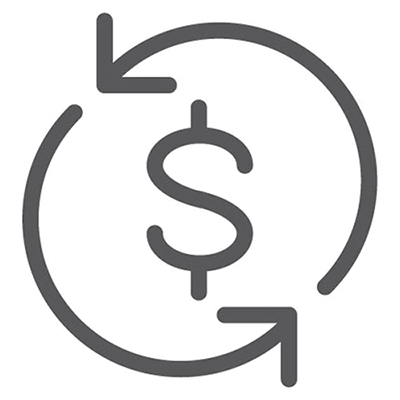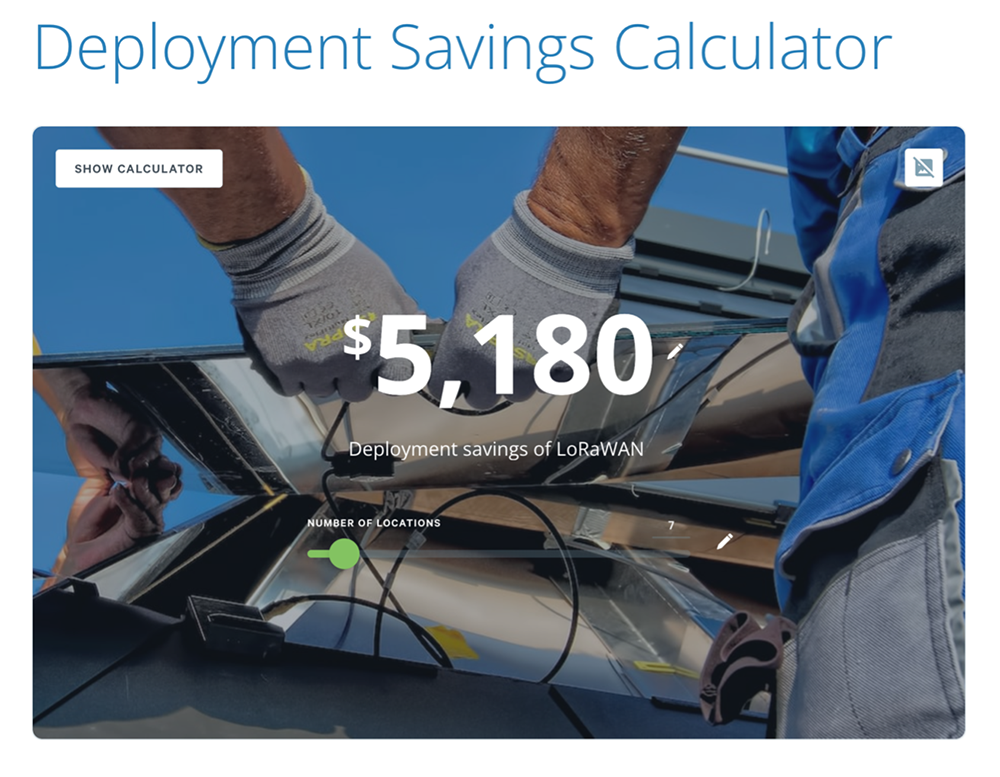许多技术领导者从技术角度评估 LoRaWAN。他们调查射频性能和集成难易程度等问题,花费了大量的项目预算,却没有验证IoT 解决方案最重要的部分--LoRaWAN 解决方案对企业的投资回报率(ROI)是多少?
作为 LoRaWAN 解决方案提供商,我们的团队在 7 年的时间里见证了许多IoT 项目的成功和失败。成功案例中最常见的特征是那些有明确的投资回报率,并能获得业务运营支持的案例,或者那些旨在支持盈利和可扩展业务模式的案例,因为客户普遍采用这种模式。
那么,应该如何计算投资回报率呢?简单的等式是回报 - 投资 = 效益。(对于得出的效益美元数字,数字越大越好)。
在本篇文章中,我们将探讨在规划 LoRa 项目时需要考虑的关键因素,以帮助确保您的 LoRaWAN 部署能够实现企业的投资回报目标。
查看开发人员工具包
回报 "应考虑哪些因素?
有 企业可以通过多种方式实现 LoRaWAN 部署的投资回报。
企业可以通过多种方式实现 LoRaWAN 部署的投资回报。
运营成本
首先,每个组织都必须评估实现运营节约的机会,这可能会对底线产生巨大影响。下面举例说明部署 LoRaWAN 的组织如何改善运营成本:
- 实时监控:有关基础设施状态的实时警报支持快速洞察远程操作,无需定期进行现场访问
- 预测性维护:数据模式可在设备发生故障前显示主动行动,以减少运行停机时间
- 合规数据记录:某些行业需要保存合规成本记录,而使用 Digi 的 LoRaWAN 设备到云解决方案可以轻松获得这些记录。
- 降低人工成本:通过对远程设备的深入了解和访问,企业可以随时随地快速监控、管理、维护和更新设备。
不要忘记乘以站点数量、资产数量和员工数量,以得出总的成本节约/收入机会。
收入机会
省钱是一个很好的投资回报率指标。但如果能扩展产品或服务范围,创造新的创收机会,那就更好了。例如,如果您正在开发一款联网应用,用于监测高尔夫球场土壤的湿度,那么 LoRaWAN 解决方案扩展的连接范围是否能让您将业务拓展到商业农业市场?
对于原始设备制造商来说,这是投资回报率计算中最好的一种 "回报"。然而,在解决方案完全成熟之前,产品战略和商业模式必须迅速得到验证并通过市场测试。
投资 "应考虑哪些因素?
许多IoT 的资深人士都知道,IoT 是很难的。这其中有许多变动因素,包括硬件、连接性、软件、云、无线电性能、系统集成、认证等等。在计算 "投资 "时,必须考虑其中的每一个因素。
一个成功的IoT 项目通常会涉及多个供应商,每个供应商都会在某些时候产生成本。有些成本是 NRE(非经常性开支),有些则以 SaaS 模式提供产品/服务。验证供应商的技术解决方案固然重要,但 "供应商利润叠加 "后的复合成本会使IoT 解决方案变得更加难以承受。

独特的 LoRaWAN 节余
从节约成本的角度来看,LoRaWAN 提供投资回报的方式有多种。
节省连接费用
与其他几种 LPWAN 技术相比,LoRaWAN 具有显著的成本节约优势。LoRaWAN 能够通过单个网关和单个蜂窝回程汇聚成千上万台终端设备。(欲了解更多信息,请参阅我们的博文《产品经理应考虑将 LoRaWAN 用于IoT 解决方案的 5 个原因》)。这为更广泛的使用案例节省了大量成本--使IoT 管理人员能够数字化和连接设备,而这些设备的蜂窝数据成本是您无法承受的。欲了解更多信息,请参阅我们的网络研讨会:使用 LoRaWAN 实现动物保健数字化。
使用此公式计算连接节省的费用:
每个站点的节点数量 x 每月 $ 的蜂窝电话计划费用 .x 站点数量 - 网关 每月 $ 的蜂窝电话计划费用 x 网关数量 = 节省的总费用
节省电池成本
LoRaWAN 网络中设备的初始电池尺寸较小,成本较低。从长远来看,更换电池的次数比其他竞争技术要少得多。现场发电(如太阳能电池板)也更小、成本更低。
请联系 Digi 团队,使用我们的IoT LoRaWAN 投资回报率计算器进行免费咨询。

部署节余
利用 Digi LoRaWAN 和 X-ON 云平台,您可以缩短部署时间,并通过扫描即用部署工具实现设备部署自动化。这些成本节约是 Digi LoRaWAN 端到端解决方案所独有的。许多技术领导者忽视了部署过程,而这往往是IoT 项目中最昂贵的部分。使用Digi的解决方案,用户可在几分钟内通过内置的实时网络测试工具成功安装设备或网关!
更多节约
使用 Digi 的端到端解决方案,还有更多方法实现最大投资回报率。不再叠加利润!Digi 提供包括硬件、认证和可提供网络运营工具和洞察力的云平台在内的全套解决方案,提供完全集成的产品体验。除了这种专为快速上市而设计的产品外,Digi 还提供专家团队的设计服务,帮助您在创纪录的时间内完成设计。与 Digi 合作作为您的解决方案合作伙伴,可以消除来自多个供应商的利润叠加,并简化投资回报率计算中的成本结构。
下一步工作